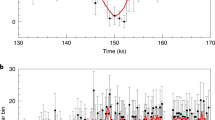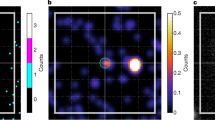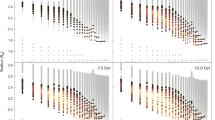Abstract
UNEXPECTEDLY high background X-radiation has been observed during a daytime stellar X-ray survey by rocket1. The source of the radiation is attributed to X-ray fluorescence of the Earth's atmosphere. The results of calculations of the X-ray fluorescence spectrum which could be observed from a spacecraft near a planet are presented here. This spectrum should be a valuable tool in the determination of the composition of planetary atmospheres, particularly with regard to the minor constituents such as neon and argon on Venus and Mars and nitrogen and carbon on Jupiter. It could also be used to detect and identify the atmosphere of Mercury.
This is a preview of subscription content, access via your institution
Access options
Subscribe to this journal
Receive 51 print issues and online access
$199.00 per year
only $3.90 per issue
Buy this article
- Purchase on SpringerLink
- Instant access to full article PDF
Prices may be subject to local taxes which are calculated during checkout
Similar content being viewed by others
References
Grader, R. J., Hill, R. W., and Seward, F. D., J. Geophys. Res., 73, 7149 (1968).
Fink, R. W., Jopson, R. C., Mark, H., and Swift, C. D., Rev. Mod. Phys., 38, 513 (1966).
McElroy, W. B., J. Geophys. Res., 74, 29 (1969).
Kliore, A., Fjeldbo, G., Seidel, B. L., and Rasool, S. I., Science, 166, 1393 (1969).
Hogan, J. S., Rasool, S. I., and Encrenaz, T., J. Atmos. Sci., 26, 898 (1969).
Tomlin, S. G., J. Atmos. Terr. Phys., 31, 1323 (1969).
Author information
Authors and Affiliations
Rights and permissions
About this article
Cite this article
AIKIN, A. X-Ray Glow from Planetary Atmospheres. Nature 227, 1334 (1970). https://doi.org/10.1038/2271334a0
Received:
Issue date:
DOI: https://doi.org/10.1038/2271334a0



